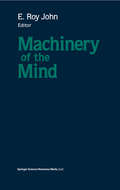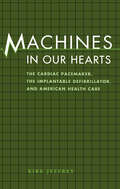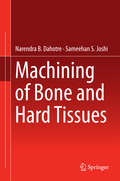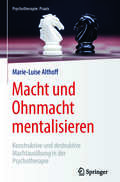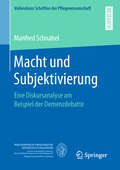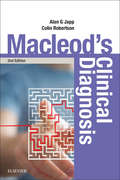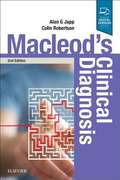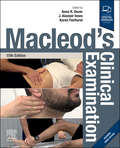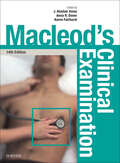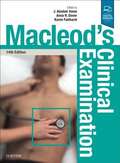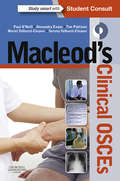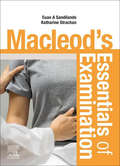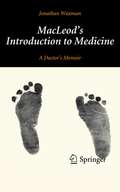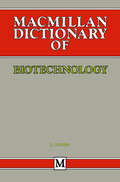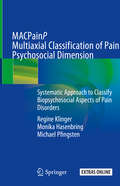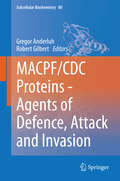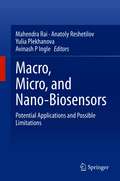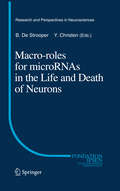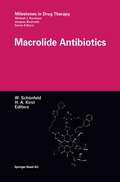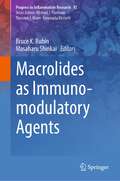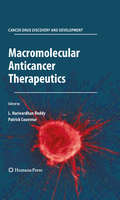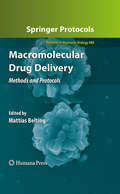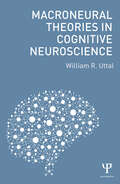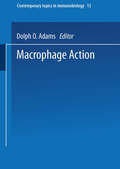- Table View
- List View
Machinery of the Mind: Data, Theory, and Speculations About Higher Brain Function
by JOHNIn the spring of 1987, I was in Havana, Cuba, where I was participating in planning a large-scale longitudinal study of the neurophysiological, neurochemical, and behavioral characteristics of cohorts of patients with cerebrovascular disease, depression, senile dementia, schizophrenia, or learning disabilities; and also part of this study were their first-degree blood relatives. This study was the outgrowth of a long-term project on the practical application of computer methods for the evaluation of brain electrical activity related to anatomical integrity, maturational development, and sensory, perceptual;·-and cognitive processes, especially in chil dren. For many years, that project had been supported by the United Nations Development Program (UNDP), the National Scientific Research Center of Cuba (CNIC), and the Ministries of Public Health and of Education of Cuba. Since its inception, I had served as a technical advisor to the UNDP project. When the project began, I became acquainted with Dr. Jose M. Miyar Barrueco, who was at that time the Rector of the Medical School of the University of Havana. Because of his keen interest in the new computer technology and its potential utility in developing countries, we met from time to time during my visits. These occasional meetings continued after he became Secretary of the Cuban Council of State, so that he could remain apprised of progress and problems with which he might help.
Machines in Our Hearts: The Cardiac Pacemaker, the Implantable Defibrillator, and American Health Care
by Kirk JeffreyToday hundreds of thousands of Americans carry pacemakers and implantable cardioverter-defibrillators (ICDs) within their bodies. These battery-powered machines—small computers, in fact—deliver electricity to the heart to correct dangerous disorders of the heartbeat. But few doctors, patients, or scholars know the history of these devices or how "heart-rhythm management" evolved into a multi-billion-dollar manufacturing and service industry. Machines in Our Hearts tells the story of these two implantable medical devices. Kirk Jeffrey, a historian of science and technology, traces the development of knowledge about the human heartbeat and follows surgeons, cardiologists, and engineers as they invent and test a variety of electronic devices. Numerous small manufacturing firms jumped into pacemaker production but eventually fell by the wayside, leaving only three American companies in the business today. Jeffrey profiles pioneering heart surgeons, inventors from the realms of engineering and medical research, and business leaders who built heart-rhythm management into an industry with thousands of employees and annual revenues in the hundreds of millions. As Jeffrey shows, the pacemaker (first implanted in 1958) and the ICD (1980) embody a paradox of high-tech health care: these technologies are effective and reliable but add billions to the nation's medical bill because of the huge growth in the number of patients who depend on implanted devices to manage their heartbeats.
Machining of Bone and Hard Tissues
by Narendra B. Dahotre Sameehan S. JoshiThis book provides an in-depth review of state-of-the-art orthopaedic techniques and basic mechanical operations (drilling, boring, cutting, grinding/milling) involved in present day orthopaedic surgery. Casting a light on exploratory hybrid operations, as well as non-conventional techniques such as laser assisted operations, this book further extends the discussion to include physical aspects of the surgery in view of material (bone) and process parameters. Featuring detailed discussion of the computational modeling of forces (mechanical and thermal) involved in surgical procedures for the planning and optimization of the process/procedure and system development, this book lays the foundations for efforts towards the future development of improved orthopaedic surgery. With topics including the role of bone machining during surgical operations; the physical properties of the bone which influence the response to any machining operation, and robotic automation, this book will be a valuable and comprehensive literature source for years to come.
Macht und Ohnmacht mentalisieren: Konstruktive und destruktive Machtausübung in der Psychotherapie (Psychotherapie: Praxis)
by Marie-Luise AlthoffIn diesem Buch diskutiert die Autorin mit Blick auf die psychotherapeutische Praxis, wie Macht und Machtausübung im konstruktiven Sinne eingesetzt werden können. Spontan assoziieren Menschen eher Negatives zum Thema Macht. Es wird meist über die eigene Ohnmacht und die Macht „der da oben“ gesprochen, äußerst selten über das eigene Streben nach Macht. Dass Macht und Machtausübung sowie der Umgang mit Ohnmacht in der Psychotherapie eine bedeutende Rolle spielen, ist unstrittig. Dennoch werden die konstruktiven und destruktiven Aspekte von Macht immer noch zu wenig reflektiert. Hier liegt sowohl aufseiten der Psychotherapeuten als auch der Patienten ein Mentalisierungsdefizit vor. In diesem Buch werden Fragen gestellt und Anregungen für die Praxis entwickelt.Geschrieben für Psychologische Psychotherapeuten, Kinder- und Jugendlichenpsychotherapeuten, Familientherapeuten, Berater, Psychiater, Ärzte, Studierende und Psychotherapeuten in der Ausbildung.
Macht und Subjektivierung: Eine Diskursanalyse am Beispiel der Demenzdebatte (Vallendarer Schriften der Pflegewissenschaft)
by Manfred SchnabelVor dem Hintergrund des demografischen Wandels steht die Demenzthematik im Vordergrund öffentlicher Debatten. Damit ist auch eine Debatte um die richtige Deutung des Phänomens und um die Zuständigkeit und Lösungskompetenz der involvierten Instanzen verbunden. Manfred Schnabel untersucht diesen „Deutungskampf“ mit den Instrumenten einer politischen Diskursanalyse. Unter Rekurs auf poststrukturalistische Konzepte werden hegemoniale Strukturen in der Debatte rekonstruiert und übergeordneten diskursiven Mustern zugeordnet. Als Differenzkriterium dienen dabei jeweils spezifische Perspektiven auf den Menschen, auf das Wesen seiner Gemeinschaft und auf die Ordnung der Dinge.
Macleod's Clinical Diagnosis E-Book
by Alan G Japp Colin Robertson Rohana J. Wright Matthew Reed Andrew RobsonMacleod’s Clinical Diagnosis demonstrates how to apply the core clinical skills learned from the companion textbook Macleod’s Clinical Examination to maximum advantage. Charting the course from routine work-up to diagnosis, this book presents a modern and realistic approach to clinical assessment and explains how to integrate information obtained from the history, examination, bedside tests and specialised investigations. The first section Principles of clinical assessment examines different approaches to diagnosis, reviews the fundamental elements necessary for accurate patient assessment, provides a helpful template for a ‘routine workup’ and describes how to adapt the assessment to fit the clinical context. The second core section of the book Assessment of common presenting problems contains a series of ‘diagnostic guides’ that lead the reader, step-by-step through the major presenting problems in medicine and surgery, explaining how to recognise red flag features, eliminate life-threatening conditons and generate a logical differential diagnosis. This book has been praised as an invaluable resource for senior medical students and junior doctors as they attempt to make the difficult transition from mastering basic clinical skills to assessing patients in the real world of clinical medicine. A unique book allowing a reader to apply the skills of clinical examination in the formulation of a differential diagnosis and placing a patient’s symptoms in context. Takes a problem-based approach to diagnostic reasoning, reflecting both modern medical and current educational practices. Builds on the clinical skills outlined in the companion Macleod’s Clinical Examination textbook. For this Second Edition the text has been expanded with five new topics covering nausea and vomiting; vaginal bleeding; red eye; urinary incontinence; and weight loss.
Macleod's Clinical Diagnosis (PDF)
by Alan G. Japp Colin Robertson Rohana J. Wright Matthew Reed Andrew RobsonMacleod's Clinical Diagnosis demonstrates how to apply the core clinical skills learned from the companion textbook Macleod's Clinical Examination to maximum advantage. Charting the course from routine work-up to diagnosis, this book presents a modern and realistic approach to clinical assessment and explains how to integrate information obtained from the history, examination, bedside tests and specialised investigations.
Macleod's Clinical Examination - E-Book: Macleod's Clinical Examination - E-Book
by Anna R Dover J. Alastair Innes Karen FairhurstFifty years since it was first published and now fully revised, Macleod’s remains the textbook of choice for medical students, junior doctors, nurses and allied health practitioners who understand that excellence in clinical examination is integral to good practice. The fifteenth edition will teach you how to take a history and carry out proficient clinical examination, in order to elicit the key clinical symptoms and signs of disease. It covers general principles, relevant history, examination and investigations for all the major body systems – and how to effectively apply these skills to specific clinical situations and prepare for assessment. Macleod’s Clinical Examination is enhanced with 32 supplementary videos demonstrating key clinical examination routines described in the book, many new and revised for this edition in line with latest guidance and best practice. Primarily focused on the practical skills required by medical students and early career stage clinicians Explains the physical basis of clinical signs to aid understanding Introduces the formulation of a differential diagnosis Provides logical initial investigations for each body system Enhanced sections on adapting skills to particular situations, including the challenges of remote consultation and infection control Updated text and images, to ensure the content is relevant to a diverse readership and patient population Latest clinical decision-making models to aid the learner’s diagnostic reasoning 8 brand new videos produced especially for this edition covering: Obstetric examination Gynaecological examination Assessment of fluid balance Examination of the hand and wrist Examination of the foot and ankle Examination of the neck Examination of the foot in diabetes and peripheral vascular disease The timed up and go test
Macleod's Clinical Examination E-Book
by J Alastair Innes BSc PhD Frcp Ed Anna R Dover PhD Frcp Ed Karen Fairhurst PhD FRCGPThis classic textbook aims to assist clinicians develop the consultation skills required to elicit a clear history, and the practical skills needed to detect clinical signs of disease. Where possible, the physical basis of clinical signs is explained to aid understanding. Formulation of a differential diagnosis from the information gained is introduced, and the logical initial investigations are included for each system.The first part of the book addresses the general principles of good interaction with patients, from the basics of taking a history and examining, to the use of pattern recognition to identify spot diagnoses. The second part documents the relevant history, examination and investigations for all the major body systems. The third part illustrates the application of these skills to specific clinical situations. The final part covers preparation for assessments of clinical skills and the use of these skills in everyday practice. The book has accompanying videos demonstrating many of the key clinical examination routines as set out in the book. A new editorial team has undertaken a substantial review of the book’s contents and with the help of many new authors has radically revised the order and approach of the text. Several new chapters have been created including a chapter on patients with mental disorders; a chapter covering the approach to a deteriorating patient; a chapter on assessment of patients towards the end of life and two new chapters on applying the key clinical skills during assessments and in practice. The structure of the text has been rationalised with careful use of boxes, tables and figures to set out the concepts for maximum clarity.
Macleod's Clinical Examination (PDF)
by J. Alastair Innes Anna R. Dover Karen FairhurstThis classic textbook aims to assist clinicians develop the consultation skills required to elicit a clear history, and the practical skills needed to detect clinical signs of disease. Where possible, the physical basis of clinical signs is explained to aid understanding. Formulation of a differential diagnosis from the information gained is introduced, and the logical initial investigations are included for each system.
Macleod's Clinical OSCEs - E-book
by Paul A. O'Neill Alexandra Evans Tim Pattison Meriel Tolhurst-Cleaver Serena Tolhurst-CleaverThis new book for medical students contains over 60 of the most commonly encountered OSCE stations in medicine and surgery. The OSCEs are arranged according to type of skill; for example history-taking, ethics and communication, physical examination. This is an accessible book for students under pressure who are revising for a clinical OSCE. It provides simple advice, tips about preparation, and will be easily understood. It provides sample OSCE station questions and simulated patient scripts (with answers) for practice at home.Provides sample OSCE station questions and simulated patient scripts (with answers) for practice at home. Will give an insight into how to ‘Get inside the examiners head’ to help the student do better in the OSCE station. Highlights ‘red flag’ situations and explains the underlying importance of these topics. Includes advice both on how to excel and on common errors at each OSCE station. Several of the OSCE stations give details of how more advanced students would be expected to perform at higher levels. Includes online access to sample marking sheets.
Macleod's Essentials of Examination E-Book
by Euan Sandilands Katharine Fiona StrachanThis new book is a companion to the international best-seller Macleod’s Clinical Examination. It places the examination of a patient in the context of how a student’s knowledge will be assessed in an OSCE or other form of clinical test. Using a standardised form of presentation this book will help the student succeed in passing their clinical tests.The book provides a standardised framework for examination of all the major body systems. Using a novel tabular approach the book provides a clear set of guidelines on what to do at each stage of the clinical examination. It also reminds the reader what are the corresponding key points to think about and sets out associated exam tips. The exam tips are subsequently linked to potential examiner’s questions. Each system ends with a reminder of how to present the findings and relevant tips to maximise your success.
MacLeod's Introduction to Medicine: A Doctor’s Memoir
by Jonathan Waxman‘MacLeod's Introduction to Medicine: A Doctor’s Memoir’ is a collection of stories that gives the reader an insight into the humorous side of a doctor's life. There is a rich source of humor in medicine, and this book aims to share some of this.
MACPainP Multiaxial Classification of Pain Psychosocial Dimension: Systematic Approach to Classify Biopsychosocial Aspects of Pain Disorders
by Regine Klinger Monika Hasenbring Michael PfingstenThis book offers a diagnostic tool for physicians and psychologists who want to systematically document pain within a multimodal structure. MACPainP (multiaxial classification of pain-psychosocial dimension) is a systematic, comprehensive and clinically oriented diagnostic instrument for evaluating pain-related disorders, and includes differentiated descriptions to enable syndromes to be systematized and diagnoses compared. MACPainP can be used as a professional add-on for the International Classification of Diseases ICD-10 as well as the upcoming pain classification ICD-11, released by WHO. This clearly structured book provides an easy introduction to the biopsychological aspects of pain disorders, to allow a nuanced approach to the psychological diagnosis of pain patients. It discusses possible comorbidities (e.g. depressive disorders, anxiety disorders) as well as concrete behavior-related steps for pain-related psychological and medical treatments. An essential reference for physicians and psychologists in the field of pain therapy, it is part of the learning European Pain Federation Curriculum (EFIC) of pain therapists.
MACPF/CDC Proteins - Agents of Defence, Attack and Invasion (Subcellular Biochemistry #80)
by Gregor Anderluh Robert GilbertThis book focusses on evolutionary, structural and functional aspects of pore-forming proteins, bringing together prominent researchers in the fields of structural biology and cellular and biophysical techniques. The focus is on the MACPF/CDC protein super family that was originally discovered because of unexpected structural similarity between a domain present in bacterial cholesterol-dependent cytolysins (CDC) and proteins of the membrane attack complex/perforin (MACPF) family. Members of the MACPF/CDC super family are crucial for many biological processes, being efficient agents of development, defence, attack and invasion of cells and tissues. However, their best-known role is in bacterial pathogenesis and the proper functioning of the vertebrate immune system, via formation of transmembrane pores in target cell membranes.The book contains chapters on the distribution of MACPF/CDC proteins and on aspects of their evolution and structural properties, the similarities between different super family members and functional properties of some of the best known examples. The book also contains an overview of biophysical approaches that may be used in the future to provide further insights into how these interesting proteins function.
Macro, Micro, and Nano-Biosensors: Potential Applications and Possible Limitations
by Mahendra Rai Anatoly Reshetilov Yulia Plekhanova Avinash P. IngleThis book includes an international group of researchers who present the latest achievements in the field of enzyme, immune system, and microbial and nano-biosensors. It highlights the experimental evidence for formation of biological fuel cells (BFCs)-which has a dual purpose – as a device that produces electricity and the systems which produce it simultaneously cleaning up the environment from polluting organic compounds. Considering the work in the field of macro, micro and nano-biosensors, considerable attention is paid to the use of nanomaterials for the modification of working electrodes. Nanomaterials in some cases can significantly improve the parameters of analytical systems. Readers will be interested in the projection of the presented theoretical and experimental materials in the field of practical application of modern analytical developments. The presented results in many cases imply the possibility of using the created models of macro, micro and nano-biosensors, and biofuel elements in the field of health, and protection/restoration of the environment. It includes information about all existing types of transducers of signals in biosensors – electrochemical, optical and quantum-optics, thermoelectric, data of atomic force microscopy, piezoelectric, and more. On the basis of these principles, descriptions are given about the functioning of macro, micro and nano- biosensors for the detection of compounds used in medicine, detection of compounds that clog the environment, and thus affect human health, for compounds that are potentially the basis for the production of drugs, for the selection of compounds that have medicinal activity, for immunodetection, and to assess the quality of food. These questions form the basis of research carried out in the field of biosensors in the world. Since the described models of biosensors have high sensitivity, high measurement speed and selectivity, the described results attract the attention of both the ordinary reader and business class specialists who create and implement analytical technologies. This book is very useful for researchers in life sciences, chemical sciences, physics, and engineering. In addition, it will be useful for the persons working in industry. Advanced technologies specialists will be attracted by the novelty of the proposed solutions and their relevance and ease of implementation. Since the studies contain sections describing the parameters of different biosensors, BFCs, they are easily navigated into assessing the effectiveness of the practical use of the proposed device. The relevant sections indicate such characteristics as detection ranges, life span, type of biological material used, the method of formation of the bio-receptor part. These parameters are of interest to both developers of new models of biosensors and BFC, and their manufacturers.
Macro Roles for MicroRNAs in the Life and Death of Neurons (Research and Perspectives in Neurosciences)
by Bart De Strooper Yves ChristenThe discovery of microRNAs has revealed an additional level of fine tuning of the genome and how genes are used again and again in different combinations to generate the complexity that underlies for instance the brain. This book examines this field.
Macrolide Antibiotics (Milestones in Drug Therapy)
by Wolfgang Schönfeld Herbert A. KirstThere are only very few chemical classes of antibiotics in medical use, and these have originated over a span of more than 60 years of research. Almost half a century ago, the first member of the macrolides, erythromycin, was introduced as a treatment option for bacterial infections. Erythromycin is a very complex fermentation product obtained from the soil bacterium Saccharopolyspora ery thraea (originally named Streptomyces erythreus). The success of erythromycin, based on its efficacy and tolerability, stimulated researchers throughout the world to undertake intense efforts to understand the biology and chemistry of macrolides and to use this experience to improve the properties of this compound class. The second generation of macrolides, based on chemical modifications of erythromy cin, is currently being in broad use, especially for treatment of respiratory tract infections. We presently foresee the introduction of a new generation of macro lides, i. e. the ketolides, which have the potential to overcome rising resistance problems. This monograph is intended to give the interested reader an overview on "macrolide experience", covering important areas from basic research to clinical use. Starting from a historic overview, the essential basic parameters - efficacy, pharmacokinetics, pharmacodynamics, and pharmacology - are highlighted in order to introduce the reader to the rationale for clinical use of macrolides. The following group of chapters cover the complex chemistry of the macro lactone structures, giving historic background, basic structure-activity relation ships of various derivatization strategies, and perspectives for future discovery of new semisynthetic macrolide antibiotics.
Macrolides as Immunomodulatory Agents (Progress in Inflammation Research #92)
by Bruce K. Rubin Masaharu ShinkaiFor over 50 years, clinicians have known that macrolide antibiotics have effects on inflammation and the immune system that are not related to their antimicrobial properties. These immunomodulatory properties, best described for treating inflammatory airway diseases, protect the lung and the host and improve clinical status. This book summarizes our current knowledge regarding proposed mechanisms for these properties, established clinical results, and what the future may hold with emphasis on novel clinical applications and the fascinating development of non-antimicrobial macrolides with preserved and enhanced immunomodulatory properties.
Macromolecular Anticancer Therapeutics: Macromolecular Anticancer Therapeutics (Cancer Drug Discovery and Development)
by L. Harivardhan Reddy Patrick CouvreurIn spite of the development of various anticancer drugs, the therapy of cancer has remained challenging for decades. The current therapy of cancer is overwhelmed because of the inability to deliver therapeutics to all regions of a tumor in effective therapeutic concentrations, intrinsic or acquired resistance to the treatment with currently available agents via genetic and epigenetic mechanisms, and toxicity. As a result, cancer therapy using conventional therapeutics and different types of treatment regimens using this therapeutics has not led to a convincing survival benefit of the patients. In this context, Macromolecular therapeutics offer several advantages over conventional low molecular therapeutics by various ways such as, enable the use of larger doses of these agents by limiting the toxicity, by enhanced permeability and retention into tumors, by tumor targeting using tumor-specific antibodies, by specific inhibition of oncogenes using anticancer oligonucleotides etc. Cancer treatment using this macromolecular therapeutics has considerably improved the survival benefit for patients. As a result, various macromolecular therapeutics are already commercialized or are under clinical development. Although we are far from a real magic bullet today, looking at the pace of research and current success in this field of macromolecular therapeutics, it appears that we are approaching a magic bullet for the efficient treatment of cancer. Thus, we believe that the subject of this book is very timely, and that the book will fill an unmet need in the market. This book is unique and assembles various types and aspects of macromolecular anticancer therapeutics for cancer therapy in one shell and conveys the importance of this interdisciplinary field to the broad audience. Thus, in a nutshell, this book details the basics of cancer, and various therapeutic strategies such as those based on macromolecular therapeutics hence can become an important reference for practitioners, oncologists, medical pharmacologists, medicinal chemists, biomedical scientists, experimental pharmacologists, pharmaceutical technologists, and particularly it can essentially become a handbook of macromolecular therapeutics for cancer therapy for graduates, post-graduates and Ph.D. students in these fields.
Macromolecular Drug Delivery: Methods and Protocols (Methods in Molecular Biology #480)
by Mattias BeltingMacromolecular drugs hold the promise of becoming new therapeutics for several major disorders, including cancer and cardiovascular disease. This incredible potential is explored in Macromolecular Drug Delivery, a volume which gives a wide-ranging overview of contemporary methods used in the field, and which addresses the limitations presented by a lack of safe and efficient drug delivery strategies. Chapters offer information on both in vitro and in vivo methods of macromolecular delivery, thus appealing to a broad scientific audience. Composed in the highly successful Methods in Molecular Biology™ series format, each chapter contains a brief introduction, step-by-step methods, a list of necessary materials, and a Notes section which shares tips on troubleshooting and avoiding known pitfalls. Comprehensive and cutting-edge, Macromolecular Drug Delivery offers a platform for interdisciplinary collaboration, which should provide opportunities for new discoveries at the interface between disciplines. Ultimately, this cooperation will lead to the use of macromolecular drugs as novel diagnostic tools and, even more importantly, as a means to revolutionize the way we view and treat diseases.
Macroneural Theories in Cognitive Neuroscience
by William R. UttalIn this book, William R. Uttal continues his analysis and critique of theories of mind. This book considers theories that are based on macroneural responses (such as those obtained from fMRI) that represent the averaged or cumulative responses of many neurons. The analysis is carried out with special emphasis on the logical and conceptual difficulties in developing a theory but with special attention to some of the current attempts to go from these cumulative responses to explanations of the grand question of how the mind is generated by the brain. While acknowledging the importance of these macroneural techniques in the study of the anatomy and physiology of the brain, Uttal concludes that this macroneural approach is not likely to produce a valid neural theory of cognition because the critical information—the states of the individual neurons—involved in brain activity becoming mental activity is actually lost in the process of summation. Controversial topics are considered in detail including discussions of empirical, logical, and technological barriers to theory building in cognitive neuroscience.
Macroneural Theories in Cognitive Neuroscience
by William R. UttalIn this book, William R. Uttal continues his analysis and critique of theories of mind. This book considers theories that are based on macroneural responses (such as those obtained from fMRI) that represent the averaged or cumulative responses of many neurons. The analysis is carried out with special emphasis on the logical and conceptual difficulties in developing a theory but with special attention to some of the current attempts to go from these cumulative responses to explanations of the grand question of how the mind is generated by the brain. While acknowledging the importance of these macroneural techniques in the study of the anatomy and physiology of the brain, Uttal concludes that this macroneural approach is not likely to produce a valid neural theory of cognition because the critical information—the states of the individual neurons—involved in brain activity becoming mental activity is actually lost in the process of summation. Controversial topics are considered in detail including discussions of empirical, logical, and technological barriers to theory building in cognitive neuroscience.
